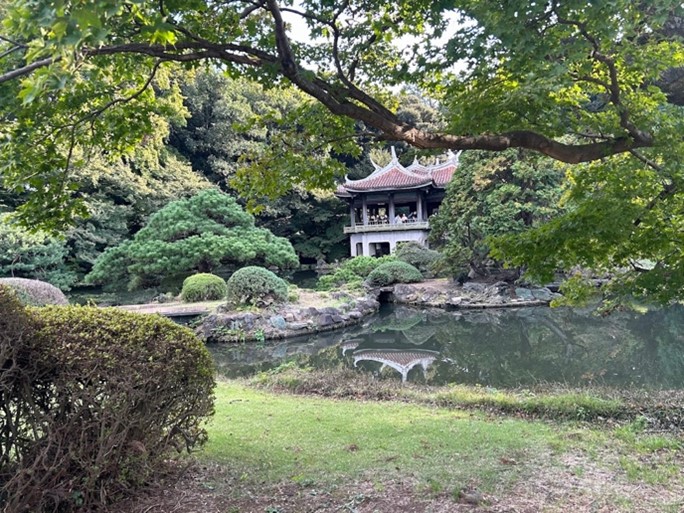
I traveled with a group led by Okan Arts to Japan to learn about Japanese quilting and textile arts. I’ve long admired Japanese quilts, which I first saw up close at the New England Quilt Museum. While we visited gardens, shrines and other Japanese cultural sites and sampled Japanese fare, this trip primarily was an opportunity to learn about Japanese quilts, along with other fiber arts traditions, such as indigo and chusen dyeing, boro and sashiko stitching, and silk weaving.
Japanese quilts are prized for their complex designs full of exquisite detail, unusual color combinations, and unique patterning. They have a distinct aesthetic, often incorporating unexpected colors and nuanced shading, and reflecting the Japanese culture’s reverence for nature.
The first leg of the trip we spent in Tokyo.
It is rare for Japanese to greet foreign guests in their own homes—among other things, in the world’s most sprawling and populous city, housing space is compact. Culturally, there is a strong separation between the personal and professional realms. So it was very special, on our first day in Japan, to travel to be welcomed at the home and studio of a renown quilter and teacher, Sachiko Yoshida. As our group of sixteen squeezed into her space, we were greeted by Sachiko, her husband, and about eight of her advanced students, who served us tea and treated us to a tableful of crunchy snacks and sweet treats as if we were honored guest.
We then spent several hours learning about and examining Sensei Yoshido’s collection of silk kimonos, and enormous, masterful quilts made by Ms Yoshido and her students.
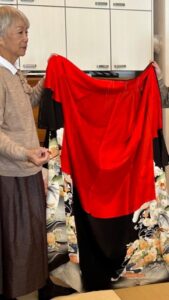

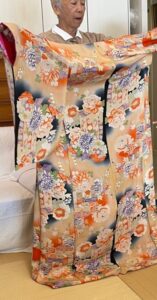
The quilts Ms. Yoshido and her students had created were made from vintage silk kimono fabric. They were large—equivalent to “king size” bed quilts– and entirely pieced, appliqued, and quilted by hand. Even the quilt backs were works of art, each with its own unique design.
It was a great privilege, , through our guide and interpreter Yumi Sugai, to be able to ask these skilled quilters many questions about their training, aesthetic and technical choices, inspiration and labor in producing these quilts, each of which took from 1-3 years to make.
Here are just a few images of the numerous quilts we were shown:
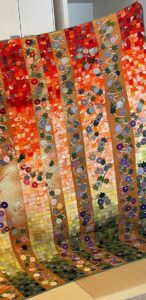

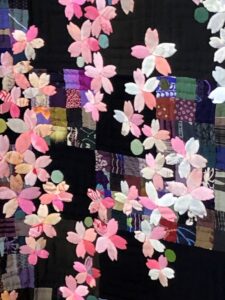

After leaving Ms. Yoshida’s home, we traveled to the Asakusa historic district, which still retains some architecture and other remnants of the Edo period. We landed near the Senso-ji, the oldest temple in the city, with its enormous lantern and pagoda.
